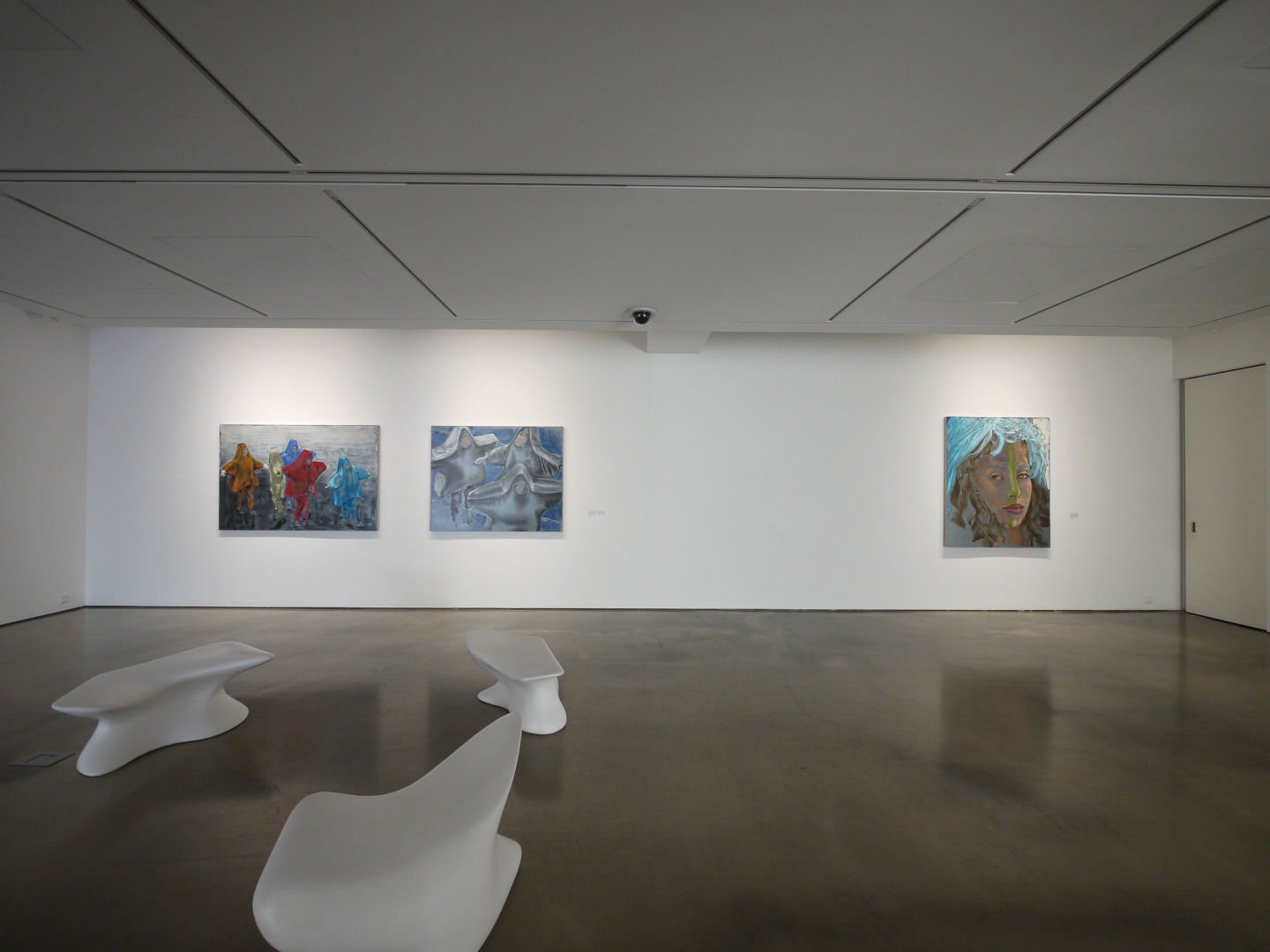 Ena Swansea, Backlit wave, 2012, Oil on panel, 45.7 x 60.9 (cm)
Ena Swansea, Backlit wave, 2012, Oil on panel, 45.7 x 60.9 (cm)
Born in 1966, Charlotte, USA
Lives and works in New York, USA
Although Swansea created abstract paintings until the end of the nineties, she began to deal with representational paintings from the year 2000. She said, “I was able to paint the world only after having looked into the masterpieces for numerous times, finally learning to see the world.” Holding onto the value of painting as a visual art while projecting her unique philosophy and vision, Swansea is opening up a new prospective in the field of conceptual art.
Swansea represents the importance of figurative paintings. Her paintings have been described as “slow” paintings, for it takes time to capture the whole painting, which does not come into a single sight. She often represents motives of nature including sea, light, and haystacks, and brings contemporary life and everyday elements into specific images carrying conceptual meanings. Here, she paints the face of contemporary society while pursuing abundance in visual effect.
Painter Luc Tuymans has mentioned that the painting of Swansea reminds us of Durer’s works, seeming to be eroded away by the passing of time. The originality of Swansea’s works comes from her use of materials. Before painting with oil, she does a sketch with graphite. When the two different materials collide with each other, there arises an unexpected physical tension. This use of graphite is quite poetic in the sense that our planet earth is also carbon-based like graphite. The distinctive quality of graphite – simultaneously absorbing and reflecting light – is crucial in the artist’s work on expanding the traditional meaning of painting.
Ena Swansea’s works have been exhibited at various international institutions including GAA Gallery, Massachusetts (2019, 2016); Maramotti Collection, Reggio Emilia (2014); 313 Art Project, Seoul (2013); Sammlung Falckenberg, Hamburg (2015, 2012); FLAG Foundation, New York (2011); Kunsthalle Vienna / Villa Stuck Munich / Kunsthalle Kiel (2008); Musée d’Art Moderne Grand-Duc Jean, Luxembourg (2008); Von der Heydt Museum, Wuppertal (2007); Museum Franz Gertsch, Burgdorf (2006); La Maison Rouge, Paris (2004) and many more. She participated in renowned group exhibitions such as Greater New York, 2006, at MoMA PS1 in New York (2005), and The Triumph of Painting part 3 at Saatchi Gallery in London (2006). Swansea’s works are included in many prominent collections, including the Museum of Modern Art in New York, Guggenheim Museum in New York, Musée d’art Moderne in Luxembourg, Tate Modern in London and many more.
에나 스완시는 90년대 말까지 추상화를 그리다가 2000년에 구상화를 그리기 시작하였다. 그녀는 “역사 속 대가들의 그림을 보고 또 보면서, 세상을 바라보는 법을 배운 뒤에야 비로소 세상을 그릴 수 있었다”라고 말했다. 시각예술로서 회화의 가치를 버리지 않으면서, 그 안에 작가의 뚜렷한 철학과 주관을 담아낸다는 점에서 스완시는 개념예술의 새로운 가능성을 열고 있다.
스완시는 구상화의 중요성을 알려주는 작가이다. 그녀의 작품은 ‘느린’ 회화라고 일컬어지는데, 한눈에 감상할 수 있는 게 아니라 시간을 두고 천천히 살펴봐야 하는 작품이기 때문이다. 그녀는 바다, 빛, 건초 더미와 같은 자연 풍경이나 현대의 삶과 일상적인 요소들을 개념을 가진 구체적인 이미지로 재현하며, 시각적인 풍성함을 추구하는 동시에, 현대 사회의 단면을 그 속에 그려낸다.
화가 Luc Tuymans는 스완시의 그림에 대해 언급하며, “Durer의 작품들처럼 그녀의 그림은 시간을 거쳐 침식된 것만 같다”라고 했다. 스완시의 그림이 그토록 독특한 이유는 그녀가 쓰는 재료 때문이다. 그녀는 흑연(Graphite)으로 그린 스케치 위에 유화로 색을 칠하는데, 그 두 가지 재료가 맞닿으면서 생성하는 예상치 못했던 효과는 물리적인 긴장감을 형성한다. 흑연 위에 작업한다는 것은 우리의 행성인 지구 또한 흑연과 같은 탄소로 이루어져 있다는 점에서 매우 시적이다. 빛을 흡수하는 동시에 반사하는 흑연의 독특한 성질은 전통적인 회화의 의미를 확장하는 작가의 작업에 있어 매우 중요한 역할을 한다.
에나 스완시는 매사추세츠 GAA Gallery (2019, 2016), 이탈리아 레지오 에밀리아 지역의 Maramotti Collection (2014), 서울 313 아트프로젝트 (2013), 함부르크 Sammlung Falckenberg (2012), 뉴욕 FLAG Foundation (2011), 룩셈부르크 Musée d’Art Moderne Grand-Duc Jean (2008), 독일 부퍼탈 Von der Heydt Museum (2007), 뉴욕 MoMA PS1 (2005) 등의 전시에 참여하였다. 그녀의 작품은 뉴욕 Museum of Modern Art, 뉴욕 Guggenheim Museum, 룩셈부르크 Musée d’art Moderne, 런던 Tate Modern을 비롯한 주요 미술관과 유수의 기관 및 컬렉터들에게 소장되어 있다.






